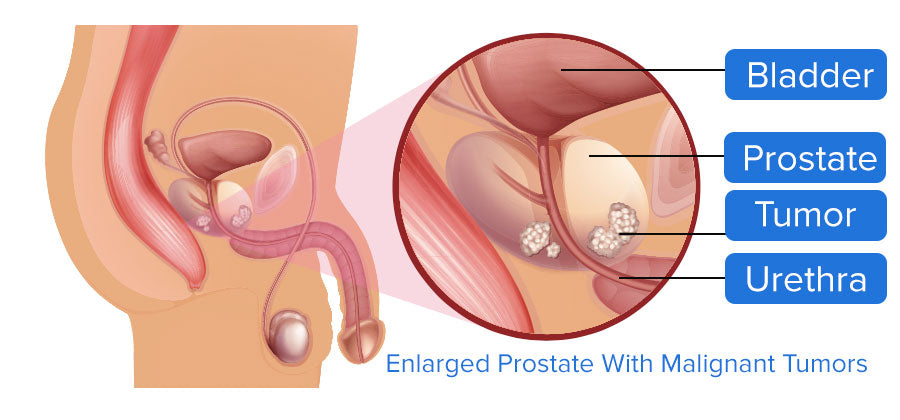Trusted for 24+ Years
Top 10 Prostate Cancer Factors

Dr. Lisa Lawless, CEO of Holistic Wisdom
Clinical Psychotherapist: Relationship & Sexual Health Expert

Men's Reproductive Cancers
Cancer in men's reproductive organs are prostate, testicle, and penis cancer. Prostate cancer is more likely to develop in older men 65 or older, and it is rare under 40. Many men can be cured of prostate cancer, and 99% of men will live at least five years after being diagnosed. If cancer has spread 1 out of 3, that will survive five years.
Testicular cancer is rare but is the most common type of cancer in males between 15 and 35 years of age. It is highly treatable, even if it spreads. Penile cancer is most common in people older than 50. If it has not spread when first diagnosed, the survival rate is about 80%.
Prostate Cancer
Prostate cancer typically does not affect men until after the age of 50; however, more men in their 40's and even their 30's are being diagnosed. Medical professionals have reasoned that this is due to poor nutritional intake from processed foods and the pollution of the environment, which, of course, affects drinking water as well as air and soil quality.

 Prevention is very important as research shows that prostate cancer sharply decreases sexual function and urinary control, which far exceed changes from normal aging, especially in those who have to receive treatment in a prostatectomy. Exploring ways to prevent prostate cancer and ways to help recover from prostate cancer are always a wise investment in one's sexual health and overall equality of life.
Prevention is very important as research shows that prostate cancer sharply decreases sexual function and urinary control, which far exceed changes from normal aging, especially in those who have to receive treatment in a prostatectomy. Exploring ways to prevent prostate cancer and ways to help recover from prostate cancer are always a wise investment in one's sexual health and overall equality of life.

Top 10 Considerations for Preventing Prostate Cancer
Understanding how to prevent prostate cancer is the first step to exploring what causes it. The major factors that contribute to the risk of prostate cancer are just as important as exploring what prevents it. Below is what one should consider when examining risks and those things that can help prevent prostate cancer.
Age
Most men develop cancer in the United States at the age of 69 or older. The more you age, the more you should be ensuring regular doctor visits for early detection.
Race
Black people are more likely to develop prostate cancer. This may be a legacy of slavery that altered genetic predispositions, influenced environmental factors, and affected various health issues.
In addition, there is a falsehood on many prostate cancer sites which, unfortunately, many doctors still believe. It is from previous data suggesting that black men have twice the risk of dying from prostate cancer. However, a JAMA Oncology study in 2019 showed that it was not valid. Researchers found that black men did not have an increased risk of dying from prostate cancer over white men with a similar prostate cancer stage. In fact, they may even have higher cure rates than white men. The study showed that black men's increased deaths were attributed to external circumstances, not prostate cancer. It was this oversight that caused the original data to be incorrect.
Asian men have the lowest incidence; however, their risk increases if they eat a poor diet, which is correlated with migrating to the United States.
Family History
Having an immediate family member who has had prostate cancer doubles your risk. The risk increases if the cancer was diagnosed at the age of 55 years or younger.
Location
Where you live indicates your risk. Some of this may be due to environmental nutrition and lifestyles in certain areas as well as exposure to sunlight, affecting vitamin D levels which impact the immune system.
Nutrition
Eating a high plant-based diet with plenty of exercise and proper nutrition can make a massive difference in the prevention of oxidative damage to DNA that contributes to prostate cancer as well as other cancers.
For example, eating foods with high lycopene levels can help prevent prostate cancer. Lycopene inhibits prostate cancer and can easily be consumed in foods such as tomatoes, guavas, watermelon, grapefruit, parsley, basil, persimmons, asparagus, and red cabbage. Consuming omega-3 fatty acids DHA and EPA at least three times per week also reduces prostate cancer risks by twenty-five percent.
Drinking coffee may also help reduce prostate cancer risk. A study through the Harvard School of Public Health (HSPH) found that men who drank six or more cups of coffee per day had a twenty percent less chance of developing prostate cancer.
See our Nutrition Guide for Good Sex & Health
Lifestyle Choices
Avoid smoking, drink alcohol in moderation if at all and ensure that you are taking care of yourself mentally, emotionally and physically.
Seeking Medical & Mental Health Treatment
Proactively addressing your psychological health and addressing issues such as depression and stress can help prevent physical responses in the body that contribute to prostate cancer. Also staying on top of medical issues such as high blood pressure, diabetes, and high cholesterol will help the prevent and elongate survivorship of a prostate cancer patient.
Exercising
The Harvard School of Public Health has shown that exercise reduces the risk of fatal forms of prostate cancer by forty-one percent. Exercise may lower cancer risk by helping control weight, reducing overly high sex hormones or insulin, and strengthening the immune system.
Ejaculations May Prevent Prostate Cancer
Men who ejaculate frequently may be protecting themselves against the disease based on U.S. research. The study, published in the April 2004 Journal of the American Medical Association, was based on an ongoing survey covering various health issues of thousands of men who were 40 to 75 when the study began in 1986.
The study, which involved more than 29,000 healthy men and covered sex of all kinds, including masturbation and nocturnal emissions, confirms a smaller Australian study that reached similar conclusions, the authors said.
In 2004, the AMA study showed that men who had twenty-one or more orgasms per month were thirty percent less likely to develop prostate cancer than those who had fewer than seven per month.
Prostate Massage & Prostate Cancer
While one in six men in the U.S. is diagnosed with prostate cancer, studies show that prostate massage helps to reduce the risks of getting prostate cancer. In addition, men who have tried it shows an increase in libido, sexual performance, and satisfaction. Prostate massage using a finger or prostate massagers is also helpful in treating prostatitis (inflammation of the prostate gland) as well as hemorrhoids and fissures.

However, men who so not have a healthy prostate or who have active prostate cancer should not partake in prostate massage without first consulting with their physician as once cancer is present, it may increase the chances of cancer spreading.
Learn more about prostate massage through our Prostate Massage Guide.
Also see our helpful article regarding Enlarged Prostate: BPH
Additional Resources
We have put together an extensive guide for cancer patients and survivors on addressing sex and cancer and invite you to explore the resources, products, and tips that may be helpful to you and a partner if you have one.
Please see Sex With Cancer Guide for more helpful information.


